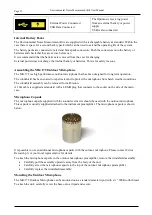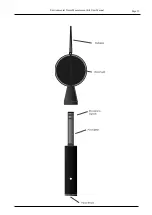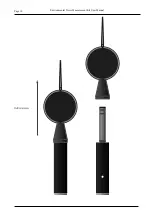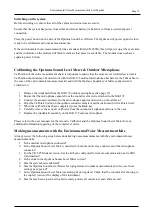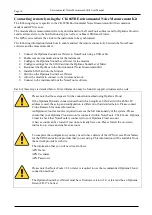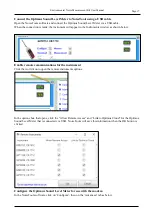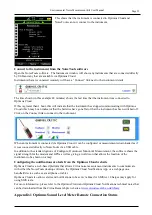
Environmental Noise Measurement Kit User Manual
Page 25
The UTC time and date can be updated when there is only 1 satellite available to the GPS
receiver. This will allow the time and date in the optimus to be set automatically.
The UTC (time) shown on the display for port B is the GPS clock, not the optimus clock, and
will show 12:00:00 until GPS contact has been made.
The GPS location is available when 3 or more satellites are available to the GPS receiver. This
will allow the measurement location to be recorded.
When the fix is satisfactory, the GPS is turned off to save power.
If no fix can be made within 2 minutes the GPS turns off with no location recorded. For repeated timed
measurements, the GPS will turn on at the beginning of each measurement.
This means that every measurement has an accurate GPS location (if possible) so it doesn’t matter if the kit has
been moved around between measurements.
GPS position accuracy is approximately ten metres under optimum conditions. Nearby obstacles can block
signals from some satellites and cause greater inaccuracy. The best orientation of the kit case is with the lid
upwards, facing open sky.
Whenever the optimus is not recording a measurement, the GPS is on and the location is displayed on the
instrument screen on General View, Page 3, under Port B/GPS. This can be used to accurately position the
instrument at a pre-determined location
Improving the signal
The modem automatically uses the best available data rate (GPRS or 3G). If reception is poor, there are a few
measures you can take to improve the signal.
Try moving the kit by a few metres, positioning it higher off the ground, keeping it away from nearby
obstacles or rotating it by ninety degrees
The GPS will find the time and date first, and then the location. In poor signal areas this can also take a few
minutes.
If the battery pack in the case remains plugged in, the GPS will remember the last location and (if necessary)
will find the new location much more quickly than from a cold start.


